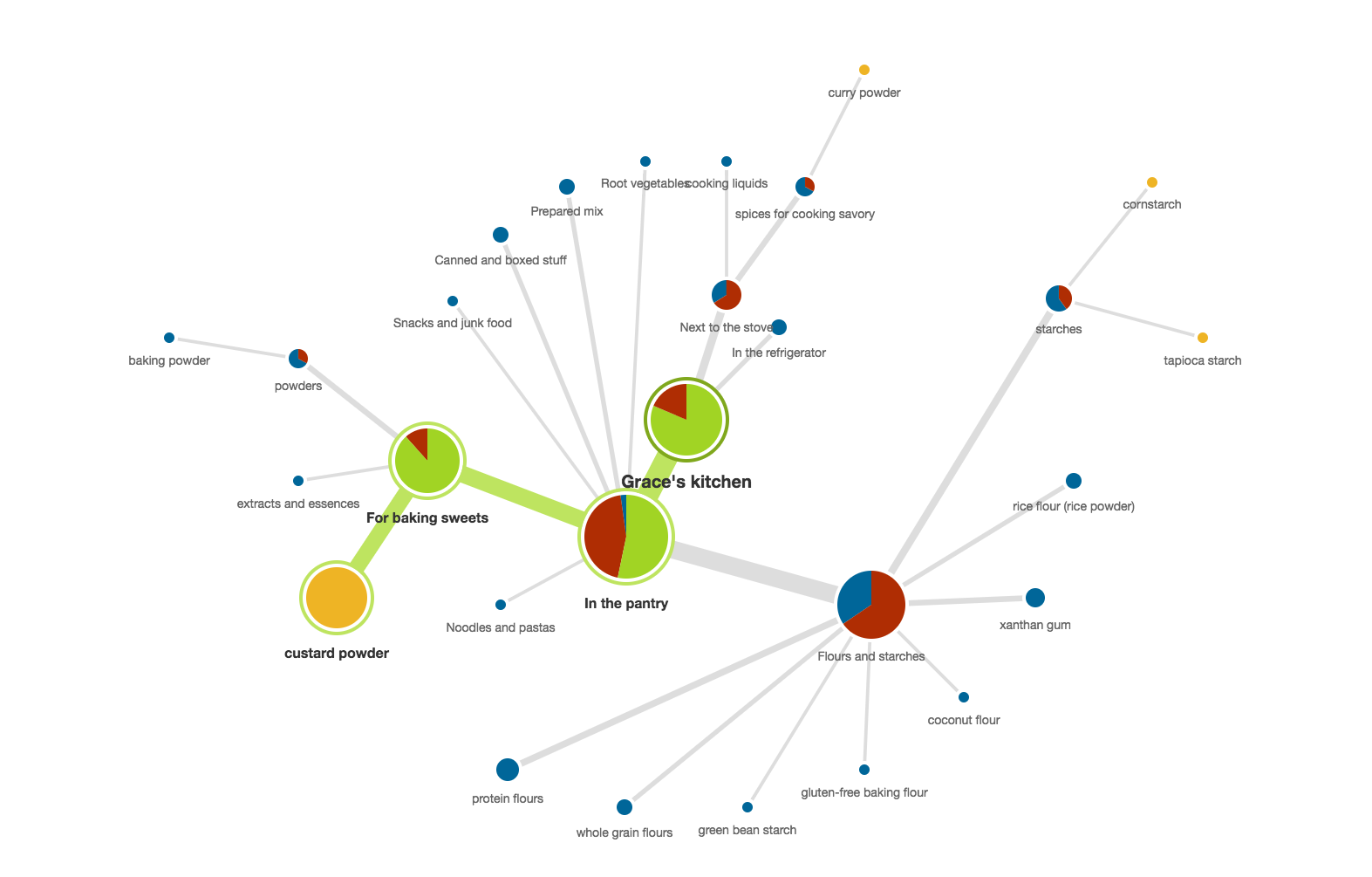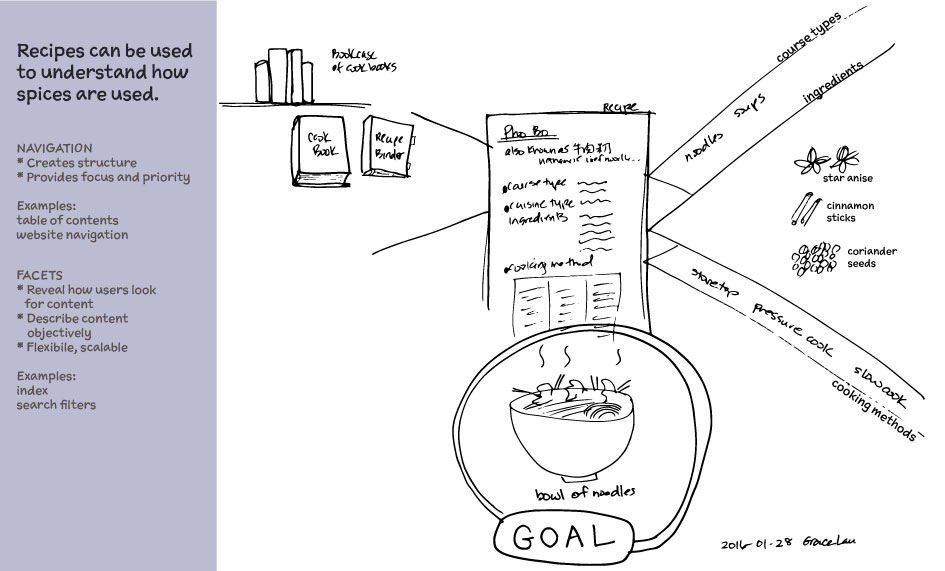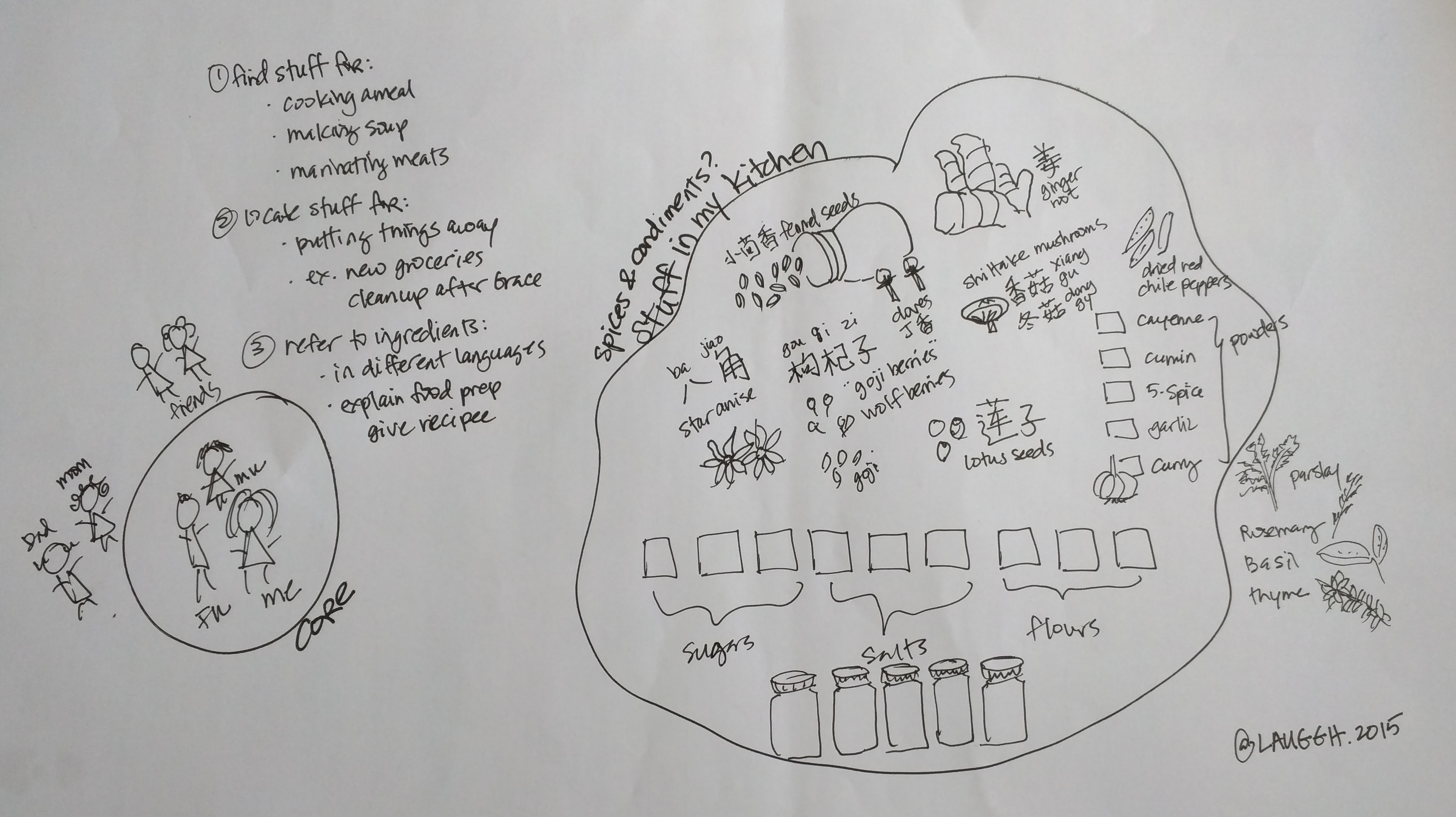Don’t laugh. I’m sure you’ve done this before. At the office, there’s a refrigerator cleanup every two weeks. At least I think it happens every two weeks. The office administrator sends out an email or posts a note on the fridge, warning you that things will be dumped if they’re not labeled. You’ve seen these long-forgotten food containers of who-knows-when science experiments pushed up against the back of the fridge. Same with those things that start growing in your pantry….
Continue readingArticles by this author:

Could You Hand Me the Dry Rub Please?
Tree testing is an effective technique for evaluating navigation and taxonomy. In an environment devoid of visual design and cues, tree tests are useful for assessing existing site navigation and proposed site structure changes. Using my kitchen, I devised a plan to test the findability of my kitchen’s spices and pantries.
Continue reading
Card Sorting a Kitchen Taxonomy
Validating with users is a fundamental part of the taxonomy recipe because all this planning and re-organizing is in vain if my in-laws come back in six months and the kitchen reverts to its original state.
Continue reading
The Many Facets of Taxonomy
This is the third in a series that has become real-life examples of taxonomies found in my kitchen. Part 3 of “Taxonomy of Spices and Pantries” looks at where and how facets can be used as multiple categories for content. Building the business case for taxonomy Planning a taxonomy The many facets of taxonomy Card sorting a kitchen taxonomy Tree testing Taxonomy governance Best practices of enterprise taxonomies Using my disorganized kitchen as an analogy, I outlined in part 1
Continue reading
Planning a Taxonomy Project
Planning a taxonomy covers the same questions as planning any UX project. Understanding the users and their tasks and needs is a foundation for all things UX. This article will go through the questions you should consider when planning a kitchen, er, um…, a taxonomy project.
Continue reading
